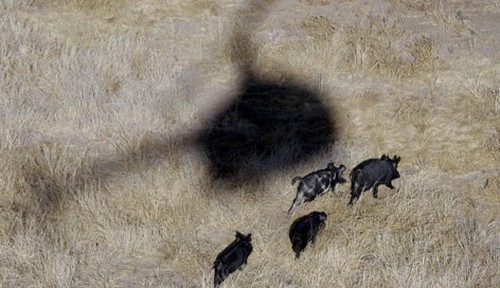Many hunters turn to hog hunting during the “off” season to fill the void between deer hunting seasons. However, there is a large percentage of hog hunters that do not own land or have a hunting lease where they can access non-native porkers. In these cases, public hunting land must fill the void. Enter the Balcones Canyonlands National Wildlife Refuge (NWR), located northwest of Austin.
Since 2000, the feral hog population has been increasing at the NWR. Now, wildlife officials at Balcones are hoping to combat the destructive impact of feral hogs on native habitat. In fact, the U.S. Fish and Wildlife Service is considering hunting the hogs by shooting them from a helicopter. It was not the first choice for controlling the increasing hog population, but desperate times call for desperate measures.
For years the Balcones Canyonlands refuge staff has tried to keep hog populations down by trapping them or killing them in one of several late autumn hunts, but those hunts have not yielded enough animals to prevent the growth of the resident hog population. Rooting aggressively for food and willing to wallow in anything that looks like a comforting depression of mud, the hogs have caused widespread damage to pastures, according to refuge manager Deborah Holle .
The refuge was formed in 1992 to protect habitat for two endangered songbirds, the black-capped vireo and the golden-cheeked warbler. The Balcones Canyonlands NWR comprises about 23,000 acres in Burnet, Travis and Williamson counties. There is no evidence that the feral hogs disrupt the life of the endangered songbirds, but they do wreak havoc on other wildlife in the refuge, Holle said. Plain and simple, wild hogs are competing with the natives for food and destroying their habitat.
Under the Feral Hog Management Plan, which was approved in 2001, hunters can shoot the animals during the refuge’s “Big Game Hunt.” The federal agency is considering amending the plan to allow for aerial shooting, which it calls a “successful and accepted means of hog control” in a news release. “Aerial shooting can be a cost-effective method for reducing the number of feral hogs occurring in high densities.” It has been used for years at the U.S. Army Corps of Engineers land surround Lake Granger and comprising the Granger Wildlife Management Area.
